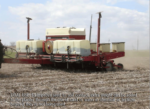Advertise Follow Us
Articles Tagged with ''Corn''
Make The Right Moves To Boost No-till Planter, Drill Performance
How growers handle down pressure, weight, attachment selection and more plays a large part in determining no-till success, says ag engineer Paul Jasa.
Read More






